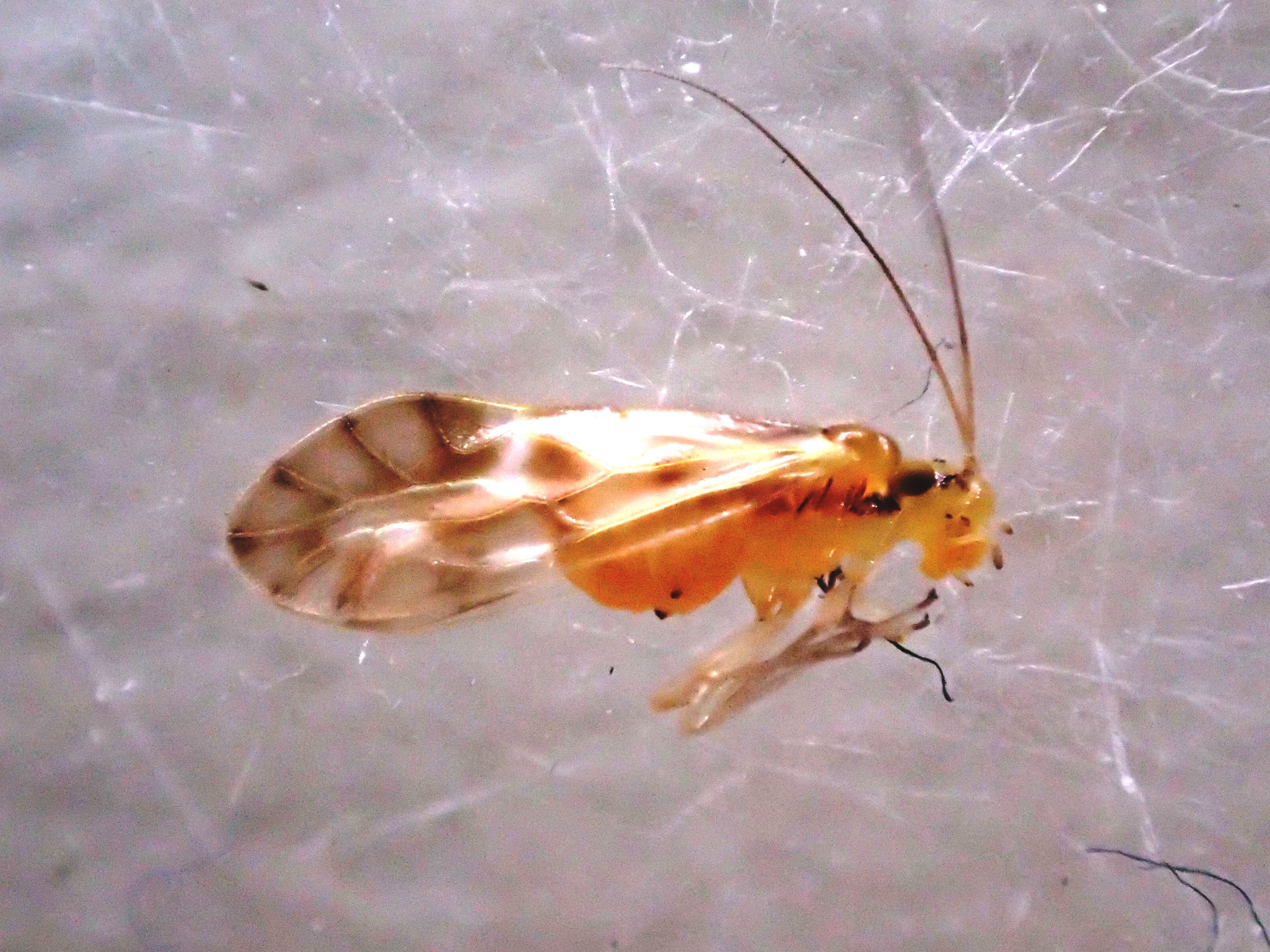
Chilenocaecilius ornatipennis (a barkfly - not Diptera, Psocoptera) Photo Barrie Hamill.
The species was first found in Ireland in 2015 and has subsequently been located at a few locations across the UK, most likely it is now quite widespread but (being tiny, and being of an obscure order of beasts) is rarely recorded. Anyway I quickly found two in the net. The species is native to Argentina and Chile. https://www.brc.ac.uk/schemes/barkfly/homepage.htm
Anyway useful to find in the garden as it proves the original one didn't just come in with the shopping or escape from BH's car.
Update, a bit of bush bashing in my own garden on West Mainland has revealed the species (I think) here, need to check, but it looks good.
Anyway useful to find in the garden as it proves the original one didn't just come in with the shopping or escape from BH's car.
Update, a bit of bush bashing in my own garden on West Mainland has revealed the species (I think) here, need to check, but it looks good.
Found on both Ash and on Wych Elm -
Chilenocaecilius ornatipennis
Chilenocaecilius ornatipennis
We had kicked off emptying BH's Heath trap and I was very pleased to see White-line Dart, a new species for me.
Two were in the trap.
Note orange on third attennal segement making this
Haematopota pluvialis rather than crassicornis.
Haematopota pluvialis rather than crassicornis.
We looked at various other Dipterous things and I tried my best to turn this Platycheirus manicatus into tarsalis, to no avail.
Platycheirus manicatus
BH showed me various fungi, leaf mines and liverworts amongst other things.
And I found Nettle-tap, one of my favourite moths.
Bashing the Downy Birch produced a lot of early instar aphids which could be Downy Birch Aphid, Euceraphis punctipennis.
Euceraphis punctipennis maybe
Also this bug, Closterotomus norwegicus, the potato capsid.
When I got home the family proved how well trained they are, not only had Louise checked out the Rook corpse in the lower field but she'd noted Nicrophorus investigator. Younger daughter also chipped in with the site of a dead Hedgehog and reported that N. investigator had also been there.
I quickly headed off to find the two corpses. The Rook rewarded me with two Nicrophorus investigator and, a patch tick of two Thanatophilus rugosus. Now strictly I should have brought the corpse back and extracted it as I'd also glimpsed another beetle in there as well as a pile of Staphy. But I decided to leave it lie, not least because my ID backlog is intimidating.
Dead Rook
Thanatophilus rugosus
Nicrophorus investigator






























